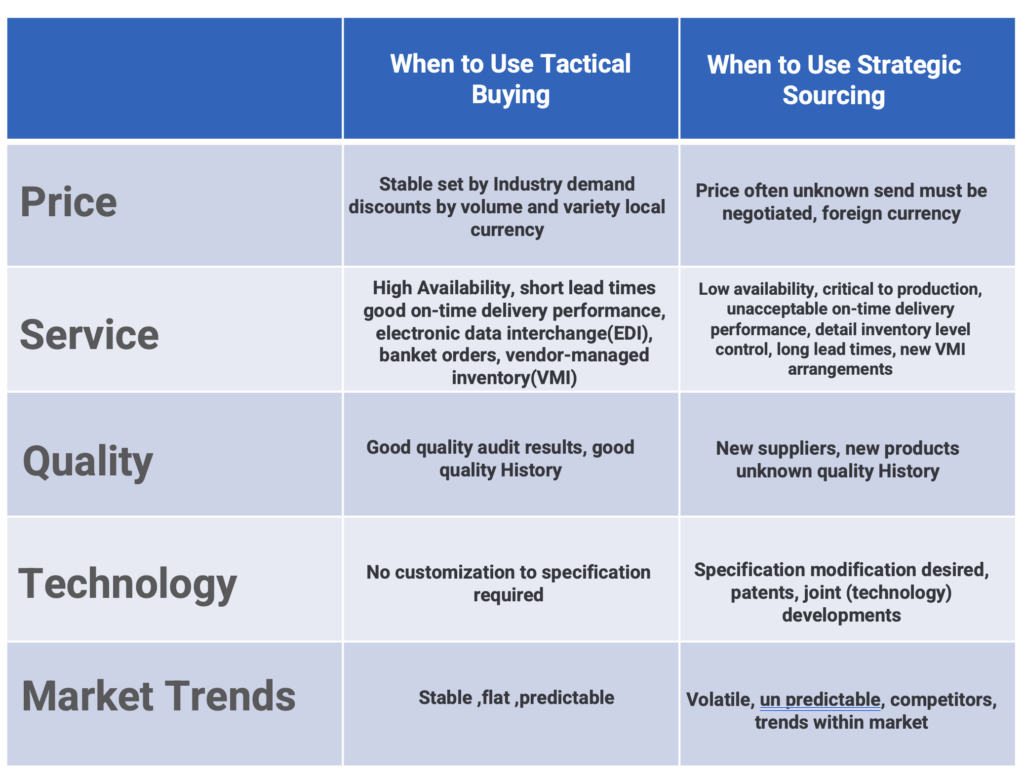This table showcases the tactical buying versus strategic sourcing grid, which aims to highlight the distinctions between tactical and strategic buying. The differences are presented across five key criteria.
Review each criterion in further detail.
Price
When it comes to tactical buying, the pricing is generally steady and determined by the demand in the industry. Discounts may be available for bulk purchases and different options, and the pricing is usually in the local currency. On the other hand, strategic buying often involves negotiating prices that may be unclear, and this negotiation might even take place in a foreign currency.
Service
When it comes to tactical buying, there are usually many different options available for services. Buyers typically expect a high level of inventory availability, short lead times, and reliable on-time delivery. In order to meet these expectations, electronic data interchange (EDI), blanket orders, and vendor-managed inventory (VMI) systems are often utilized. On the other hand, strategic buying involves dealing with low inventory availability, long lead times, and variable delivery performance, and requires advanced planning and control systems to manage inventories, requests for quotation, order configuration, pricing, and final assembly scheduling.
Quality
Tactical buying typically involves purchasing products and services from established suppliers that have a standardized level of quality. On the other hand, strategically sourced items are often new and come from specialized manufacturers, with no established quality history or testable standards.
 Quality – Conformance to or fitness for use. Quality can be defined through five principal approaches:
Quality – Conformance to or fitness for use. Quality can be defined through five principal approaches:
- Transcendent quality is an ideal, condition of excellence.
- Product-based quality is based on a product attribute.
- User-based quality is fitness for use.
- Manufacturing-based quality is conformance to requirements.
- Value-based quality is the degree of excellence at an acceptable price.
Technology
Tactical buying pertains to products that don’t require any unique technology or specification management. While Internet technologies can aid in supplier search, negotiation, and purchasing processes, they are not extensively used to promote collaborative buyer-supplier interaction. On the other hand, strategically sourced items are often bought using advanced product configuration, pricing, and production systems that encourage integrated supplier relationships and collaborative design team networking.
Market Trends
When it comes to purchasing, tactical buying is typically found in stable markets for items that face high competition and are considered commodities. On the other hand, strategically sourced items are more susceptible to market fluctuations and changes in customer and competitor trends, which can impact pricing.

